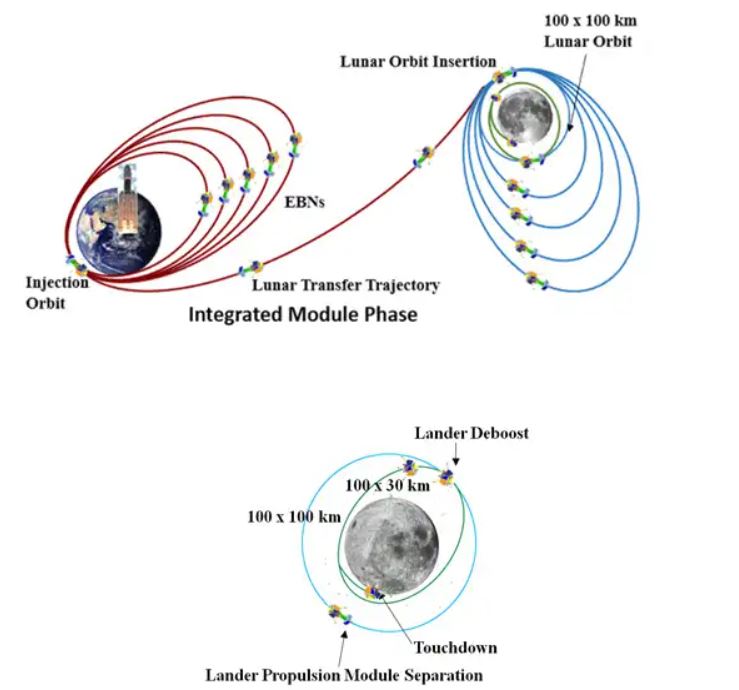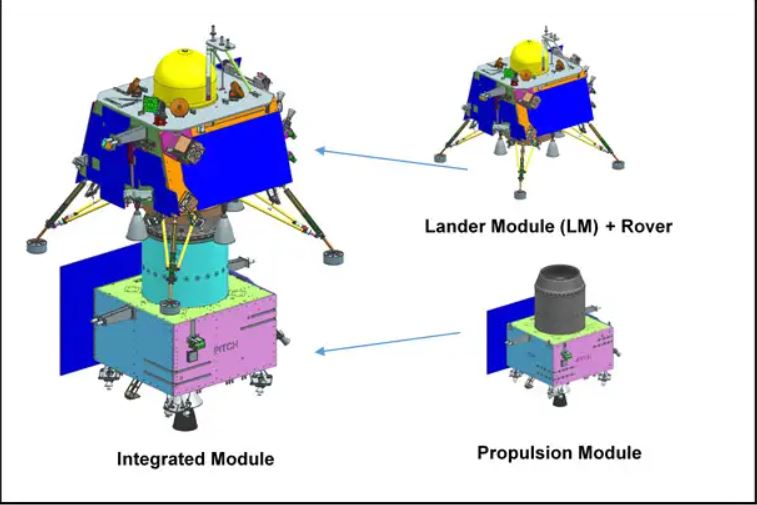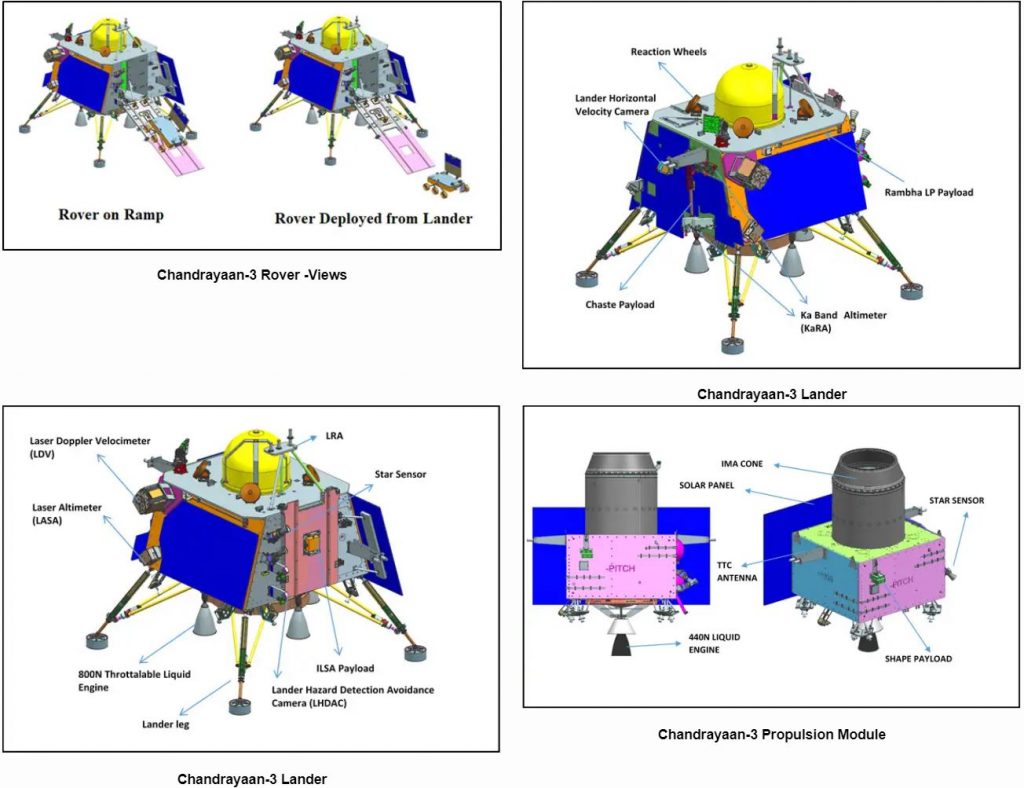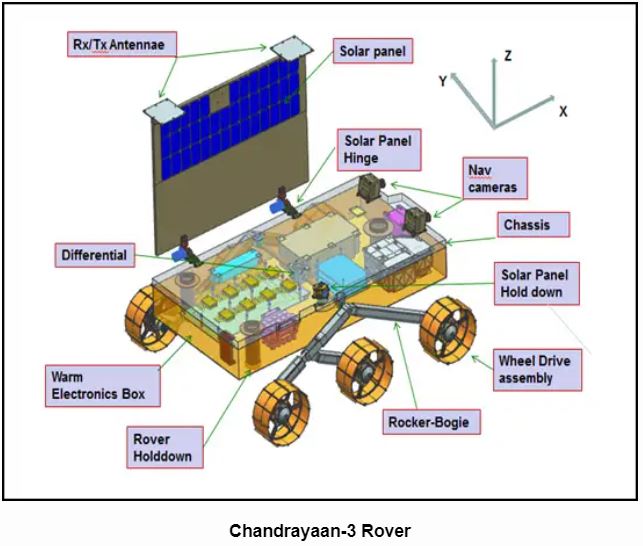Indian rover begins exploring Moon’s south pole – How it works
India has successfully launched its Chandrayaan-3 rover, marking the first time the country has landed a craft near the lunar south pole. The six-wheeled, solar-powered rover will amble around the region, transmitting images and scientific data over its two-week lifespan.
The Chandrayaan-3 mission, which aims to explore the Moon’s surface, follows a Russian lander crash in the same region and the previous Indian lunar mission’s failure in final descent four years ago. India is now matched by established spacefaring nations, with Chandrayaan-3 attracting public attention since its launch six weeks ago.
Indian Prime Minister Narendra Modi praised the successful lunar landing, a feat only achieved by the US, Russia, and China. SpaceX’s Elon Musk praised the landing as “super cool”. The Indian mission took longer than the Apollo missions in the 1960s and 1970s, as Chandraaan-3 was launched on a less-powerful rocket and had to orbit Earth multiple times to gain speed.
What challenges does the mission face?
India’s Chandrayaan-3 mission, which aims to land on the lunar south pole, has faced challenges due to rough terrain. ISRO scientists have made adjustments to improve the landing chances, including a broadening of the landing zone and a lander with more fuel and sturdier legs. Russia’s Luna-25 spacecraft also failed, and ispace, a private Japanese space startup, also failed an attempt in April.
How it Works
Chandrayaan-3 is a follow-on mission to Chandrayaan-2 to demonstrate end-to-end capability in safe landing and roving on the lunar surface. It consists of Lander and Rover configuration. It will be launched by LVM3 from SDSC SHAR, Sriharikota. The propulsion module will carry the lander and rover configuration till 100 km lunar orbit. The propulsion module has Spectro-polarimetry of Habitable Planet Earth (SHAPE) payload to study the spectral and Polari metric measurements of Earth from the lunar orbit.
Lander payloads: Chandra’s Surface Thermophysical Experiment (ChaSTE) to measure the thermal conductivity and temperature; Instrument for Lunar Seismic Activity (ILSA) for measuring the seismicity around the landing site; Langmuir Probe (LP) to estimate the plasma density and its variations. A passive Laser Retroreflector Array from NASA is accommodated for lunar laser ranging studies.
Rover payloads: Alpha Particle X-ray Spectrometer (APXS) and Laser Induced Breakdown Spectroscope (LIBS) for deriving the elemental composition in the vicinity of landing site.
Chandrayaan-3 consists of an indigenous Lander module (LM), Propulsion module (PM) and a Rover with an objective of developing and demonstrating new technologies required for Inter planetary missions. The Lander will have the capability to soft land at a specified lunar site and deploy the Rover which will carry out in-situ chemical analysis of the lunar surface during the course of its mobility. The Lander and the Rover have scientific payloads to carry out experiments on the lunar surface. The main function of PM is to carry the LM from launch vehicle injection till final lunar 100 km circular polar orbit and separate the LM from PM. Apart from this, the Propulsion Module also has one scientific payload as a value addition which will be operated post separation of Lander Module. The launcher identified for Chandrayaan-3 is LVM3 M4 which will place the integrated module in an Elliptic Parking Orbit (EPO) of size ~170 x 36500 km.
To achieve the mission objectives, several advanced technologies are present in Lander such as,
- Altimeters: Laser & RF based Altimeters
- Velocimeters: Laser Doppler Velocimeter & Lander Horizontal Velocity Camera
- Inertial Measurement: Laser Gyro based Inertial referencing and Accelerometer package
- Propulsion System: 800N Throttleable Liquid Engines, 58N attitude thrusters & Throttleable Engine Control Electronics
- Navigation, Guidance & Control (NGC): Powered Descent Trajectory design and associate software elements
- Hazard Detection and Avoidance: Lander Hazard Detection & Avoidance Camera and Processing Algorithm
- Landing Leg Mechanism.




Future Goals
India’s low-budget space program, Chandrayaan-3, has grown significantly since its 2008 lunar landing. The mission cost $74.6 million, significantly lower than many other countries. India’s frugal space engineering is attributed to copying and adapting existing technology and employing skilled engineers.
In 2014, India became the first Asian nation to orbit Mars and plans to send a probe towards the sun in September. ISRO plans a three-day crewed mission into Earth’s orbit by next year, a joint mission with Japan to send another probe to the Moon by 2025, and an orbital mission to Venus within two years.
